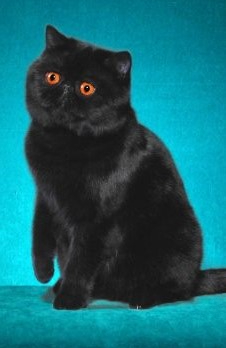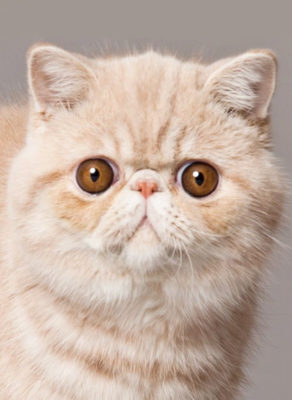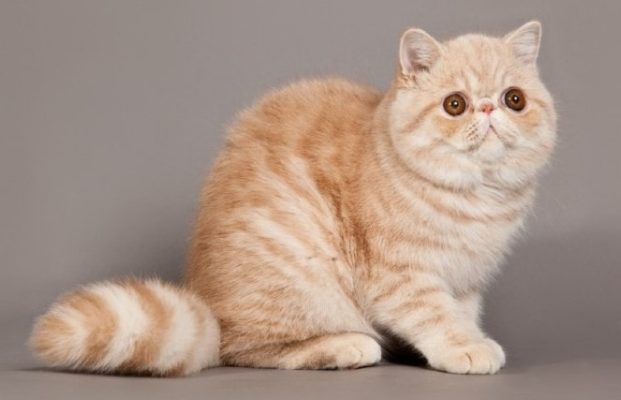Exotic Shorthair

Like the Persian, the Exotic Shorthair cat is sweet, docile, and quiet. It is a peaceful, malleable furry friend. The cat is not even aware that she is just a decoration of the house. She loves tenderness – she loves to be stroked and held in her arms. The cat bestows its family with purring and caresses. The Exot prefers to spend its free time playing games, pleasing its family.
Table of Contents
Breed Information
| Origin | United States |
| Size | Up to 30 cm |
| Weight | Males 5-7 kg Females 3-5 kg |
| Fur Type | Short-haired |
| Color | All colors and coat patterns |
| Lifestyle | Indoors |
| Lifespan | 12-15 years |
| FIFe Classification | Category I: “Persian and Exotic” Breed designation – EXO |
| WCF Classification | Group 3: “Short-haired” Breed designation – EXO |
| TICA Classification | ES |
| Group | Short-haired cats |
| Price | $1500-2000 |
Breed Photos
Origin History
The Exotic Shorthair cat, or short Exot, appeared quite recently – in the 1950s. At that time, breeders of American Shorthair cats wanted to bring new features to the structure of this breed. They wanted to change the color of the eyes and coat, so they decided to cross American Shorthair cats with Persian cats. To everyone’s surprise, kittens were born with characteristics the breeders did not expect to see. They were cute cats with doll’s faces like the Persians but with short and plush hair like the American Shorthair. The unusual hybrid was a copy of the Persian cats but with less problematic fur. Other than having a short coat, there was no other similarity to the “American”.
At first, the public treated the idea of getting exotics with disdain, and some even resisted giving their Persian cats for breeding. Of course, some brave enthusiasts did not turn their backs on the new breed and decided to participate in inbreeding. In 1966 Jane Martinck, an American breeder presented the new breed to the World Association of Cat Lovers.
Besides Persian and American short-haired cats, Burmese and Russian blue cats participated in obtaining Exotic Shorthair cats. Breeders tried to establish the gene which is responsible for the formation of short hair. Since the 1980s, it was recognized that the necessary gene was established. Since then, only crossbreeding with Persian cats and cats within their breed is allowed.
Appearance
The Exotic Shorthair cat looks like a little teddy bear. Stocky, a little clumsy, fluffy, and with a sad expression on its face. The Exot’s backbone is strong and somewhat heavy, but the fur gives an outline of roundness. The cat is medium-sized, with short paws. The tail is fluffy, with no curves. The Exotic Shorthair head is round; the muzzle is flattened, pronounced puffy cheeks. Large expressive eyes are round – from the look of the cat it looks toyish, a little “childish”. The ears are small, looking up. The nose is a pinkish shade. The color of Exots is varied: from white to blue-black, various stains are allowed. Fur is something that an Exotic Shorthair cat can be proud of. To the touch, it is very soft.
Character
Like the Persian, the Exotic Shorthair cat is sweet, docile, and quiet. It is a peaceful, malleable furry friend. The cat is not even aware that she is just a decoration of the house. She loves tenderness – she loves to be stroked and held in her arms. The cat bestows its family with purring and caresses. The Exot prefers to spend its free time playing games, pleasing its family. They want to participate in the lives of their loved ones and will quietly visit the room to see what they are doing. When the cat is home alone, it mostly sleeps sweetly or lies lazily.
Exotic Shorthair cats have a reputation for being more active and curious than their Persian siblings. Because of the influence of the American Shorthair cat genes, Exotics are livelier than Persians. Cats of this breed are incredibly sweet and affectionate. Cats, on the other hand, can be a bit aloof and independent. The pet becomes attached to its owner but can calmly survive the family’s departure for a few days. The animal is a bit shy: once it has experienced fear, it will be wary of loud noises.
Care
When a purring, fluffy Exotic kitten comes into the house, you need to make sure she is comfortable. Provide a soft place for the cat where it will spend its time. Due to the susceptibility of Exotics to diseases, you need to monitor their health more closely. Annual visits to the veterinarian are necessary. To prevent eye disease, you need to wipe them clean of discharge more often. Pay attention to how your pet breathes. Plush cat fur also requires care – once a week, you need to comb out lumps and dead lint. Claw care and ear cleaning should be part of the routine, so kittens should be accustomed to it from an early age.
Education
An Exotic Shorthair cat is smart and calm. It is better to start training from the day you bring home the cat. She will learn the rules of her family and will not break them. In no case do not use aggression and high-pitched talk – the vulnerable soul may not forgive. An Exotic Shorthair cat can remember simple commands and forbidding words.
Common Diseases
Exotic Shorthair cats are prone to some diseases because of their anatomy. Because cats’ muzzles are flattened, jaw deformities are possible, which can lead to dental problems. Small nostrils and a soft palate that is too short can cause breathing problems. Exots’ tear ducts can become blocked, causing eye disease and rashes. Exotic Shorthair cats are prone to polycystic kidney disease on a genetic level. It can be detected with a screening test.
Nutrition
The diet of an Exotic Shorthair cat is no different from that of any other breed. Cats are prone to obesity, so train her to a sense of proportion. The diet should be balanced: it may include meat, boiled vegetables, eggs, cereals. Kittens can be given milk, and older cats can be given kefir.
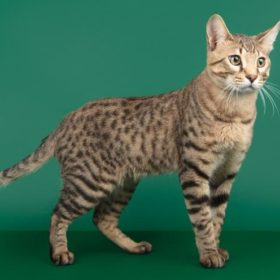 Serengeti
Serengeti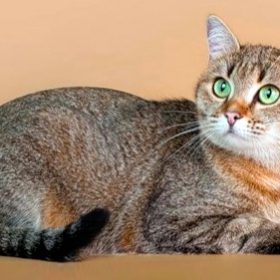 Celtic Shorthair (European Shorthair)
Celtic Shorthair (European Shorthair)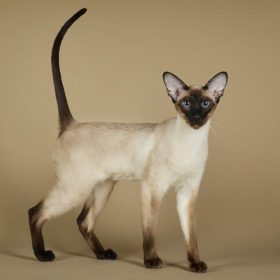 Siamese
Siamese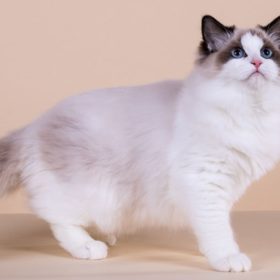 Ragdoll
Ragdoll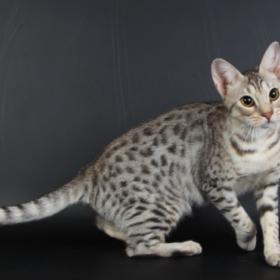 Australian Mist
Australian Mist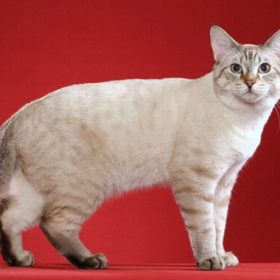 American Bobtail Shorthair
American Bobtail Shorthair